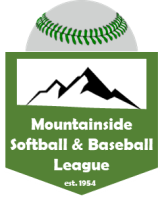Junior Umpire Training & Guidance Manual
Purpose
The purpose of this guide is to provide young umpires (ages 11 and up) with the essential knowledge, skills, and support needed to officiate games in the American League confidently and responsibly.
1. Introduction to the Role of the Umpire
Objective:
Explain the umpire’s role in maintaining fairness, safety, and fun.
Responsibilities:
-
- Call “safe” and “out” accurately based on the rules.
- Ensure the pace of play is maintained.
- Serve as a model of sportsmanship and positivity on the field.
2. Key Rules and Game Mechanics
Basic Rules to Enforce:
-
- Safe/Out calls at bases.
- Boundary calls, including foul balls and out-of-bounds plays.
- Catch or no-catch on fly balls.
Special League-Specific Rules (as outlined in the American League guidelines):
-
- No bunting.
- No infield fly rule.
- No advancing on overthrows.
- Limited stealing rules.
- Kid and coach pitch rotations and pitch limits.
3. Conduct and Sportsmanship
Umpire Code of Conduct:
-
- Treat all players, coaches, and spectators with respect.
- Make decisions with confidence and integrity.
- Stay neutral and avoid reacting to outside comments.
Dealing with Conflict:
-
- How to handle disputes calmly.
- When to seek assistance from a coach or adult supervisor.
4. Game Day Preparation
Arriving Prepared:
-
- Arrive 15 minutes early for a briefing.
- Bring necessary gear: umpire cap, whistle, rulebook (provided by the league).
Warm-Up Routine:
-
- Engage with coaches to understand any pre-game adjustments.
- Review field markings, distances, and ensure readiness of safety equipment.
5. Umpire Mechanics
Positioning:
-
- Where to stand for the best view of plays.
- How to adjust positioning for different plays (e.g., on a close play at a base).
Making Calls:
-
- Using clear hand signals for “safe” and “out.”
- Verbal cues and timing of calls.
Handling Special Situations:
-
- What to do if a player or coach questions a call.
- Working with coaches officiating from the field to keep play smooth.
6. Support and Mentorship
Mentorship by Coaches and Adult Umpires:
-
- Each kid umpire will have an assigned adult mentor for guidance.
- Adult mentors will provide feedback after each game, focusing on strengths and areas for improvement.
Continuous Learning:
-
- Monthly workshops for umpires covering advanced topics, like handling complex calls and improving positioning.
7. Safety Precautions
Personal Safety:
-
- Wearing protective gear if required.
- Awareness of ball trajectory and maintaining a safe position.
Emergency Protocols:
-
- Procedure for stopping play in case of an injury or emergency.
- Contact points for any issues beyond their role.
Appendix
- Contact Information for support.
- Sample Game Day Checklist for umpires.
- Field Diagram with umpire positioning guidelines.
Appendix A: Contact Information
League Contacts for Support and Questions
- American League VP: Please refer to the Board of Directors page for the current American League VP name and email address.
- Managers/Coaches: the American League VP can provide contact information for the current season's managers & coaches.
Appendix B: Sample Game Day Checklist for Kid Umpires
- Pre-Game Preparation
-
- Review rules and any special instructions.
- Pack gear (whistle, cap, rulebook, water, notebook for feedback).
- Confirm arrival time and location with mentor or coach.
- Upon Arrival
-
- Check in with the game coordinator or mentor.
- Walk the field to familiarize yourself with boundaries, base distances, and field markings.
- Review specific rules with coaches (if needed).
- During the Game
-
- Stand in correct position based on play and the field diagram.
- Make clear, confident calls (e.g., “Safe,” “Out”).
- Stay neutral and focused.
- Post-Game Review
-
- Consult with mentor for feedback.
- Review any notes taken and areas to improve for the next game.
Appendix C: Field Diagram and Umpire Positioning Guidelines
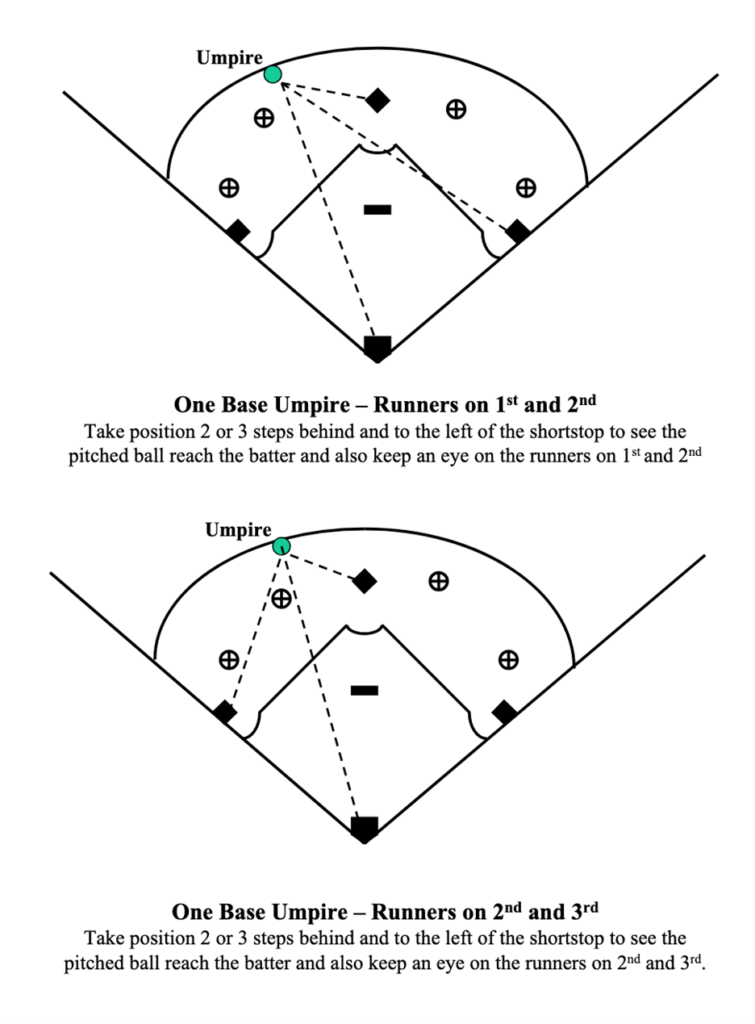
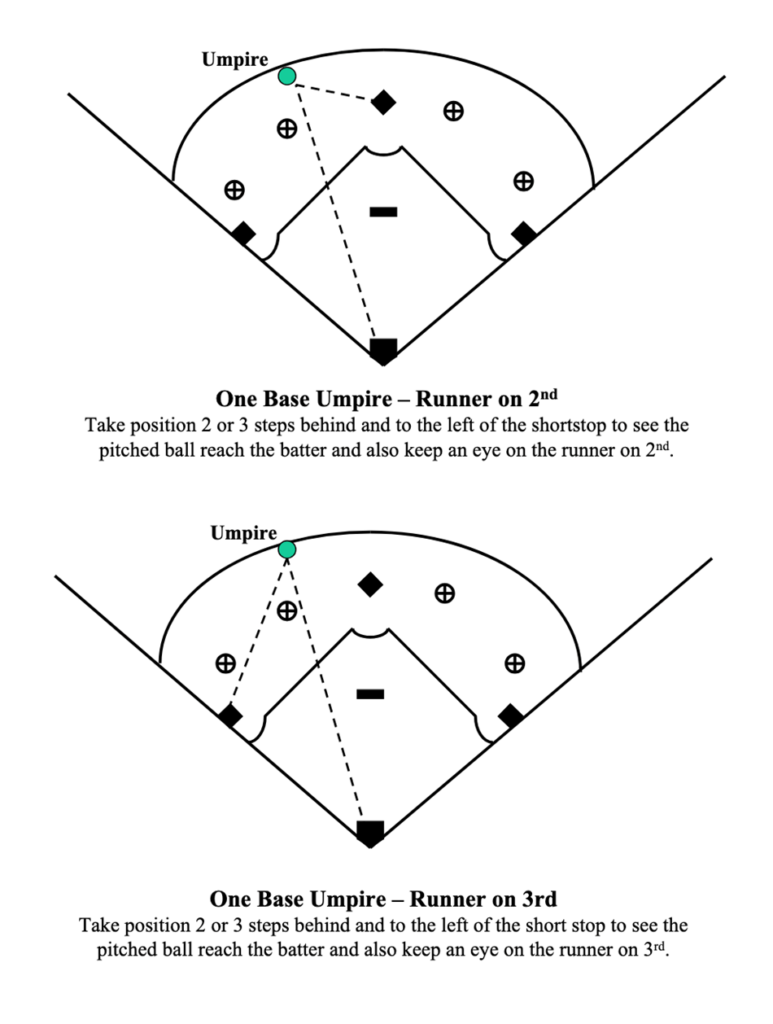
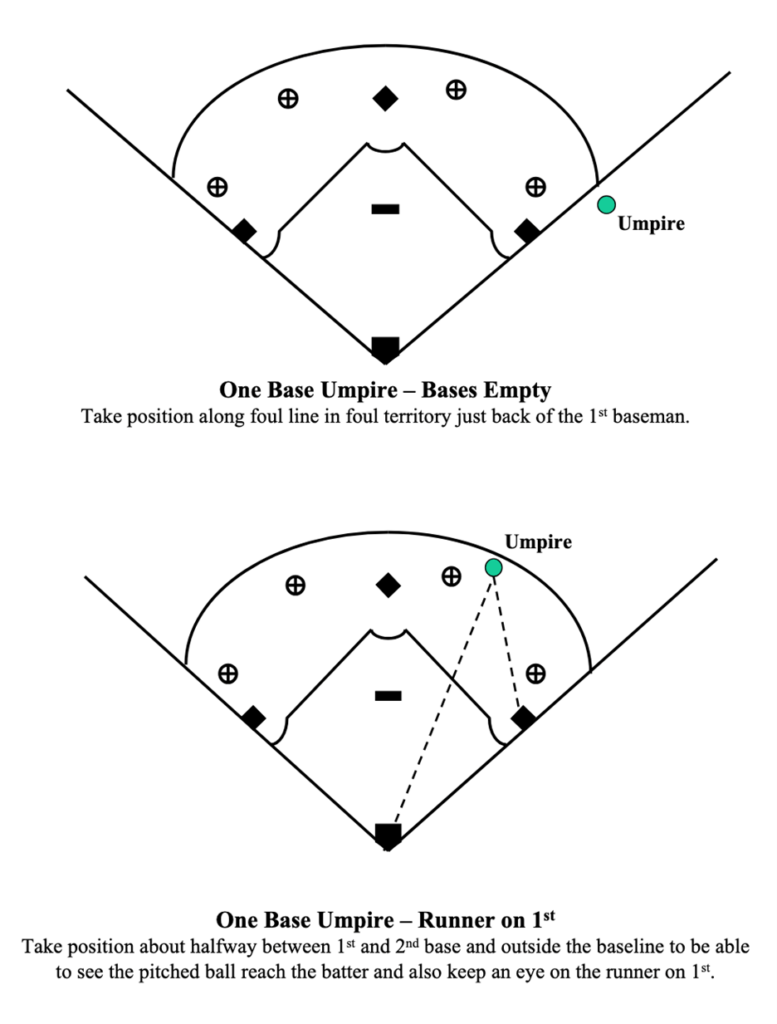
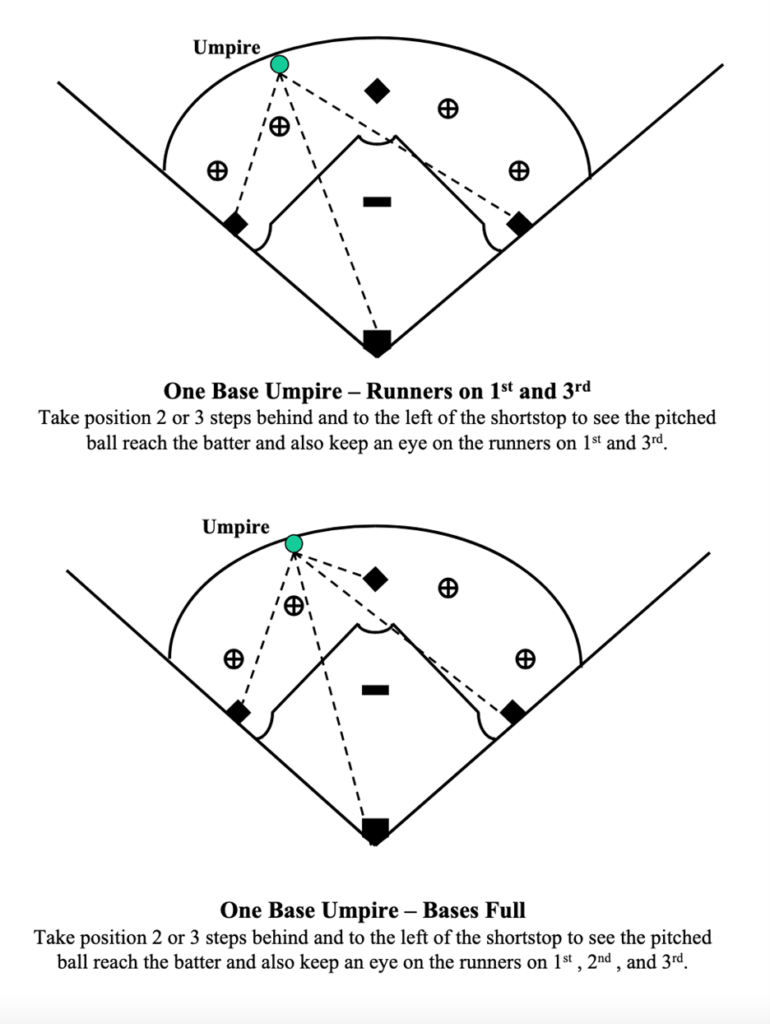
Simplified Rulebook for 1st/2nd Grade Rec Baseball
Key Responsibilities for Umpires
- Ensure the game is safe, fun, and fair for all participants.
- Make clear, confident calls for plays.
- Work closely with coaches to manage the flow of the game.
Basic Rules
Game Structure
-
- Innings: Games consist of 6 innings or a 90-minute time limit, whichever comes first.
- Batting Order: All players bat in a continuous lineup; half the lineup bats each half inning. Each team will bat the same number of players per inning for the duration of the game.
Pitching
-
- Coach Pitching: Coaches pitch for the first two innings, and the last two innings.
- Kid Pitching: Players pitch in the third and fourth innings with a maximum of 4 pitches per batter. If no hit is made, the coach finishes the at-bat.
- Strike Zone: The area from the batter’s shoulders to their knees, over home plate.
Batting
-
- Each batter gets 3 swings or 4 pitches, whichever comes first.
- Foul balls on the third swing allow one additional pitch.
- No Bunting: All batters must take a full swing.
Base Running
-
- Runners can only advance one base per hit unless the ball goes into the outfield.
- Stealing: Runners can steal 3rd base only and only during the kid pitches. All other times, runners must remain on the base until the ball is hit.
- No Sliding Headfirst: Feet-first slides are allowed.
Fielding
-
- All players on the roster take the field each inning.
- Coaches may assist players in positioning but must remain outside the basepaths during play.
- Overthrows: Runners may advance one base on an overthrow, at their own risk.
Common Scenarios and How to Call Them
Safe/Out Calls
-
- A runner is safe if they reach the base before being tagged or if the fielder’s foot isn’t on the base during a force out.
- A runner is out if tagged by a fielder holding the ball or if the ball beats them to the base in a force-out situation.
Fair/Foul Balls
-
- A ball is fair if it lands inside the foul lines or touches a base.
- A ball is foul if it lands outside the foul lines before passing first or third base.
Interference
-
- If a runner intentionally interferes with a fielder’s ability to make a play, the runner is out.
- If a fielder obstructs a runner without possession of the ball, the runner is awarded the next base.
Safety Rules
- No throwing bats: A batter who throws their bat will receive one warning. A second offense results in an automatic out.
- Helmets must be worn by batters, runners, and players in the on-deck circle at all times.
- No on-deck swinging: Only the batter at the plate should handle a bat.
Tips for Umpires
- Stay Focused: Always watch the ball and the play.
- Be Loud and Clear: Make calls with confidence and use hand signals.
- Ask for Help: If unsure, consult the coach or mentor overseeing the game.
For additional questions or assistance, contact the Board Member listed as the Junior Umpire lead on our Board of Directors page.
Code of Conduct
For Kid Umpires:
- Be Prepared: Arrive 15 minutes before game time with all necessary gear.
- Stay Professional: Remain calm and impartial, treating all players, coaches, and parents with respect.
- Communicate Clearly: Make confident calls and explain decisions if asked respectfully.
- Prioritize Safety: Always enforce safety rules and report any concerns to a coach or league official.
- Learn and Improve: Be open to constructive feedback and strive to get better each game.
For Coaches:
- Support Kid Umpires: Treat them with respect and encourage players to do the same.
- Set an Example: Model good sportsmanship and reinforce the importance of the umpire’s role.
- Handle Disputes Appropriately: Address concerns calmly and respectfully through the proper channels.
- Encourage Learning: Provide constructive feedback to help umpires grow.
For Parents and Spectators:
- Respect the Umpires: Refrain from criticizing or confronting them during or after games.
- Model Sportsmanship: Cheer positively and avoid negative comments.
- Raise Concerns Appropriately: Direct any issues to the coach or league official, not the umpire.
For questions or assistance, contact Matt Leonardelli, American League VP at matthew.leonardelli@msbl.us or 732-915-9721.
Kid Umpire Cheat Sheet
Your Job: Keep the Game Fun, Fair & Moving!
Calls You Make:
Fair or Foul Ball
- A ball that lands in fair territory = Fair!
- A ball that lands outside the foul lines = Foul!
Safe or Out at Bases
- If a runner touches the base before the ball arrives = Safe!
- If the ball beats the runner to the base or a tag is made = Out!
Time-Out for Safety
- If a player is hurt, yell 'Time!' and let a coach handle it.
Announce the Number of Outs
- Example: After an out, say 'One out!' to keep the game moving.
Calls You Do NOT Make:
- Balls and Strikes - Coaches handle this.
- Close or Confusing Plays - If unsure, let coaches decide.
- Interference or Complicated Rules - Keep it simple!
Game Flow Basics:
- Before the inning starts, yell 'Play Ball!'
- After outs, announce how many remain ('Two outs!')
- If a ball is foul, yell 'Foul Ball!' loudly.
Remember:
- Be loud and confident! No need to be perfect.
- If you are unsure, ask a coach!
- Have fun and enjoy the game!
